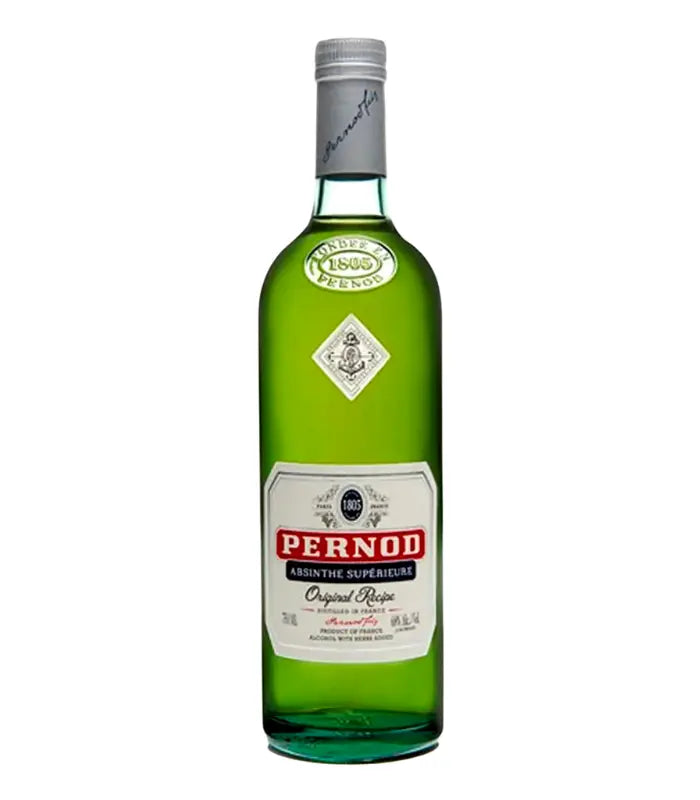
Pernod Absinthe 136 750mL
- Low stock - 8 items left
- Backordered, shipping soon
68% Alcohol (136 proof)
Made with grande
wormwood (containing Thujone)
Bright Green Color
Legend traditionally attributes the creation of an absinthe elixir to Mother Henroid of Couvet of Val de Travers, in the Canton of Neuchatel in Switzerland who concocted it from plants that she found in the mountains. The elixir was adopted by a French doctor working in Switzerland named Dr. Pierre Ordinaire who rode through the hills, peddling a strange, yet patented medicine, which he dubbed his "absinthe elixir".
Following the death of Doctor Ordinaire, the rustic recipe was perfected by his two local sisters, before being bought by a businessman named Major Dubied, who saw the potential to sell the elixir beyond medicinal purposes. Major Dubied, however, had no knowledge of the art of distilling. Therefore, he hired Henri-Louis Pernod, a 21 year old distiller to help set up a small absinthe distillery in 1798. The business prospered allowing Henri-Louis Pernod to found The Maison Pernod Fils distillery in Pontarlier in 1805. The first commercial absinthe distillery was officially born!
Henri-Louis Pernod widowed and married the daughter of Major Dubied in 1807. Together they had a son Louis who grew up working with his father at the distillery. In 1827, Henri-Louis Pernod wanted to extend distribution. He split the markets between his sons Edouard, his eldest son from his first marriage, and Henri-Louis, born from his union with Emelie Dubied. Edouard exported Pernod to the United States and Henri-Louis assisted operation in France and the French colonies.
By 1840, the family business had doubled for the Pernods as the popularity of the spirit grew swiftly. The branch distilleries expanded through family ties taking on recognizable label names as Maison Gempp-Pernod and Maison Legler Pernod. The main distillery was taken over by the grandsons of Henri-Louis Pernod in 1855, leading Pernod into the Absinthe boom of the 19th and early 20th century.
bsinthe became one of the strongest symbols of its era with its enigmatic color and the ritual surrounding it. Its popularity was furthered by its reputation for being an addictive and hallucinogenic drug. As a result, by 1915 Absinthe had been banned in the United States (1912) and in other European countries. As a result, the Pernod Fils Company closed temporarily.
It re-opened five years later when a controlled form of anise liquors was legalized with a new absinthe-free Pernod recipe - a 40% alcohol (80 proof) Anis spirit still sold today. For US consumers of Pernod Absinthe, though, only the legend of "The Green Fairy" remained until it was legalized again in 2007.
Orders cannot be shipped to PO Boxes.
No Returns allowed after orders have been processed.

